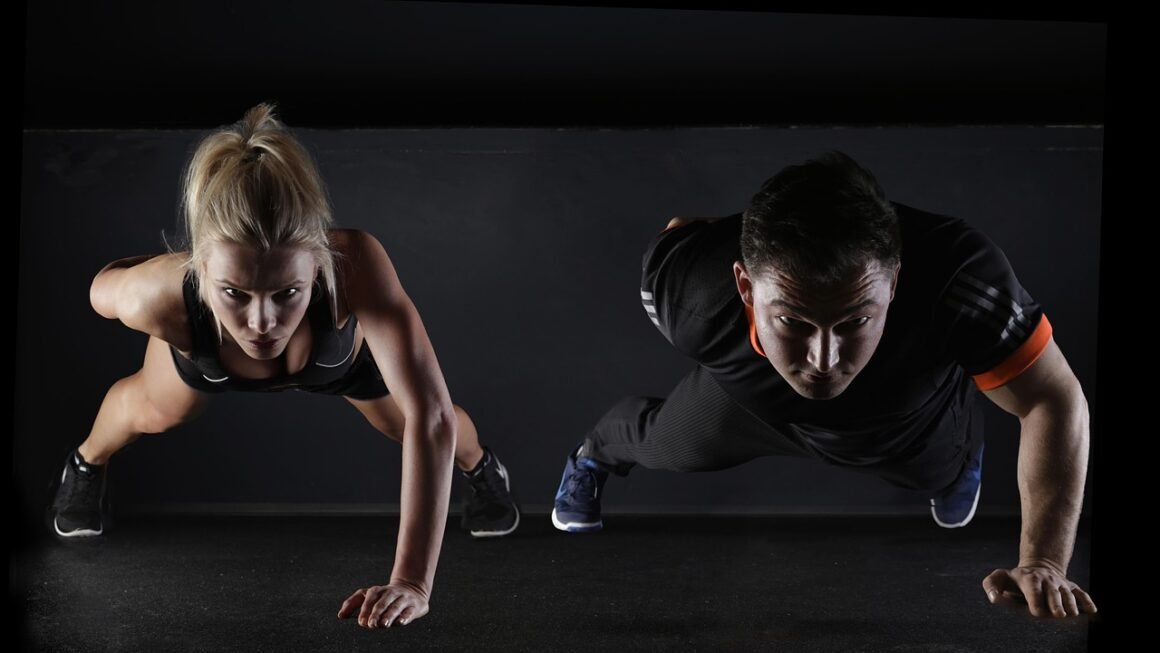Wrestling, in its myriad forms, has captivated audiences and tested athletes for centuries. One of the most prominent and globally recognized styles is freestyle wrestling. Distinguished by its dynamic movements, scoring opportunities, and strategic depth, freestyle wrestling offers a compelling blend of athleticism and mental acuity. This blog post will delve into the intricacies of freestyle wrestling, exploring its rules, techniques, benefits, and how to get involved in this exciting combat sport.
What is Freestyle Wrestling?
Defining Freestyle Wrestling
Freestyle wrestling, as the name suggests, offers a broader range of permissible holds and maneuvers compared to its Greco-Roman counterpart. Unlike Greco-Roman wrestling, where holds are restricted to above the waist, freestyle wrestlers can utilize their legs and attack their opponent’s entire body. This expanded skillset leads to a more fluid and dynamic style.
Key Differences from Greco-Roman Wrestling
- Leg Use: The defining difference. Freestyle allows using legs for offense and defense, while Greco-Roman prohibits it.
- Scoring Opportunities: Freestyle offers more diverse scoring opportunities due to the allowance of leg attacks.
- Emphasis: Freestyle emphasizes agility, speed, and explosiveness alongside strength, while Greco-Roman focuses more on upper body strength and control.
Governing Body: United World Wrestling (UWW)
United World Wrestling (UWW), formerly known as FILA, is the international governing body for wrestling, including freestyle. UWW establishes the rules, oversees competitions, and promotes the sport globally. They ensure fair play and consistent application of the rules across all levels of competition.
Freestyle Wrestling Rules and Scoring
Match Structure
A freestyle wrestling match typically consists of two three-minute periods with a 30 second break in between. Referees closely monitor the action, ensuring fair play and adherence to the rules.
Scoring System
- Takedown (2 points): Bringing an opponent down to the mat and gaining control.
Example: A single-leg takedown where you secure one of your opponent’s legs and force them to the mat.
- Exposure (2 or 4 points): Exposing an opponent’s back towards the mat at a near-vertical angle.
A “near fall” position of 2 seconds earns 2 points. Holding the exposure position for 5 seconds earns 4 points.
- Reversal (1 point): Gaining control over an opponent from a defensive position.
Example: Escaping from an opponent’s guard position and gaining top control.
- Escape (1 point): Successfully getting away from an opponent’s control while on the bottom.
Example: Standing up from the bottom position while your opponent attempts to hold you down.
- Penalty (1 point): Awarded to the opponent for rule infractions, such as illegal holds or stalling.
Victory Conditions
- Pin: Holding an opponent’s shoulders to the mat for a specified time.
- Technical Superiority: Achieving a 10-point lead over the opponent. This results in an immediate termination of the match.
- Decision: If neither a pin nor technical superiority occurs, the wrestler with the higher score at the end of the match wins by decision. If the score is tied, criteria such as last point scored or fewest cautions are used to determine the winner.
- Default: If an opponent is injured or disqualified the win goes to the other wrestler.
- Forfeit: If a wrestler chooses to give up the match, the other wrestler is given the win.
Basic Techniques and Strategies
Stance and Movement
A solid stance is crucial for balance, mobility, and the ability to execute attacks. Wrestlers typically maintain a staggered stance with bent knees and a low center of gravity.
- Footwork: Moving efficiently is key to creating angles for attacks and avoiding opponents. Footwork drills such as circle stepping and shuffles are essential.
- Level Changes: Altering your level (height) to penetrate for takedowns is critical.
Takedowns
Takedowns are fundamental for scoring points. Common takedowns include:
- Single Leg: Securing one leg of your opponent and bringing them to the mat.
Drill: Practice shooting in, securing the leg, and driving through to complete the takedown.
- Double Leg: Grabbing both legs and driving through to secure the takedown.
Drill: Focus on proper penetration, keeping your back straight, and driving with your legs.
- High Crotch: Attacking one leg high up on the thigh, and driving through the opponent.
Ground Control and Turns
Once on the mat, maintaining control and turning your opponent are essential for scoring exposure points.
- Arm Control: Controlling your opponent’s arms to prevent them from escaping.
- Leg Riding: Wrapping your legs around your opponent’s waist or torso to maintain control.
- Cradles: Wrapping your arms and legs around your opponent’s head and leg to expose their back.
Defensive Techniques
- Sprawling: A defensive move to prevent takedowns. Throwing your legs back and flattening out to stop an opponent’s penetration.
* Drill: React to an opponent’s shot by sprawling back and maintaining a strong base.
- Whizzers: Using your arm to wrap around an opponent’s arm and neck to control their upper body.
- Escapes: Techniques to get away from an opponent’s control while on the bottom.
Benefits of Freestyle Wrestling
Physical Benefits
- Strength and Power: Wrestling demands significant strength, especially in the core, legs, and upper body.
- Endurance: High-intensity matches require excellent cardiovascular and muscular endurance.
- Agility and Flexibility: The dynamic movements improve agility, flexibility, and coordination.
- Weight Management: Wrestling is an excellent activity for burning calories and maintaining a healthy weight.
Mental Benefits
- Discipline: The rigorous training regime instills discipline and commitment.
- Mental Toughness: Wrestling challenges you to overcome adversity and persevere through difficult situations.
- Strategic Thinking: Developing game plans and adapting to opponents enhances strategic thinking.
- Self-Confidence: Achieving goals and overcoming challenges boosts self-confidence.
Social Benefits
- Teamwork: Being part of a wrestling team fosters teamwork and camaraderie.
- Respect: Learning to respect opponents and coaches promotes good sportsmanship.
- Community: The wrestling community provides a supportive and inclusive environment.
Getting Involved in Freestyle Wrestling
Finding a Club or Coach
- Online Search: Use search engines to find local wrestling clubs or coaches.
- School Programs: Many schools offer wrestling programs for students.
- Wrestling Federations: Contact your local or national wrestling federation for information on clubs and coaches in your area.
Essential Equipment
- Wrestling Shoes: Provide traction and support on the mat.
- Singlet: A one-piece uniform worn during matches.
- Headgear: Protects the ears from cauliflower ear.
- Mouthguard: Prevents dental injuries.
Training Tips for Beginners
- Start with Basics: Focus on mastering fundamental techniques before moving on to more advanced skills.
- Consistent Training: Regular practice is essential for improvement.
- Listen to Your Body: Rest and recovery are crucial to prevent injuries.
- Seek Guidance: Work with experienced coaches and training partners.
Conclusion
Freestyle wrestling is a dynamic and challenging sport that offers numerous physical, mental, and social benefits. Whether you’re aiming to compete at the highest levels or simply seeking a rewarding and engaging fitness activity, freestyle wrestling can provide a path to personal growth and achievement. By understanding the rules, techniques, and benefits of the sport, you can confidently embark on your wrestling journey and experience the rewards it has to offer.



